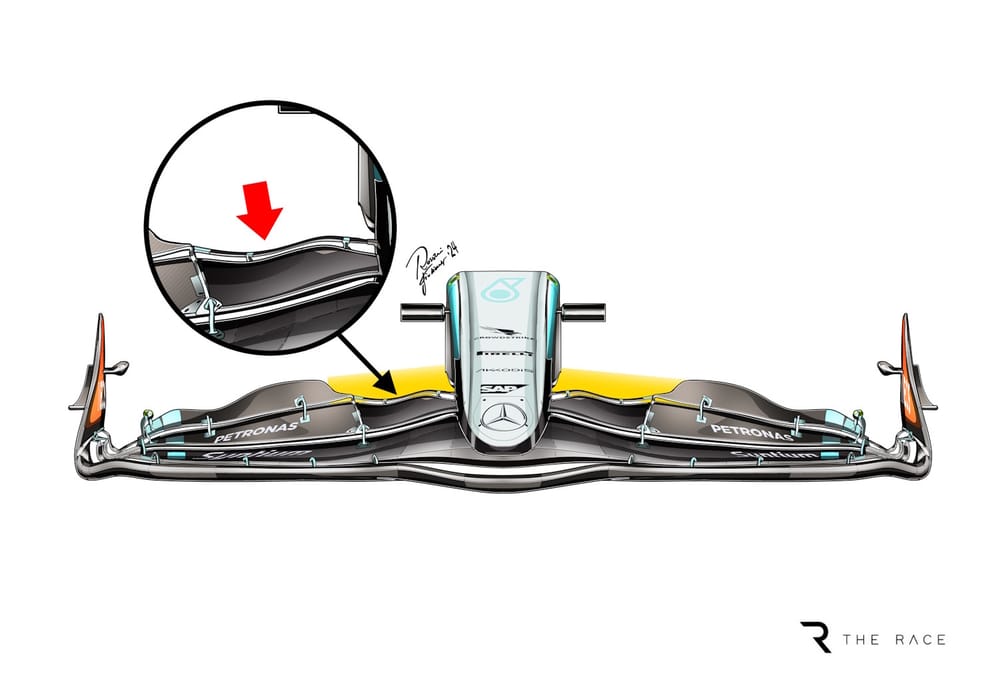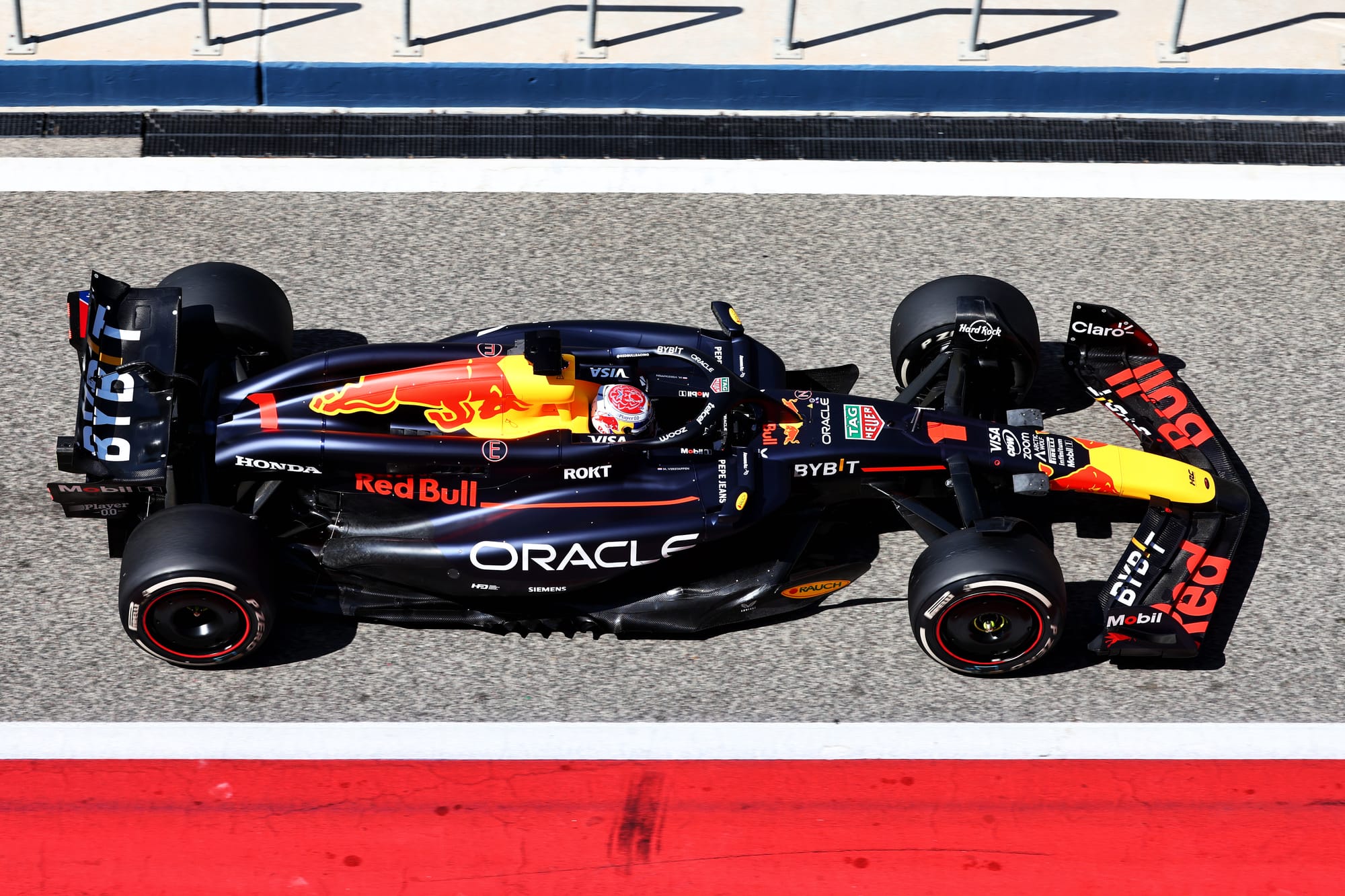Up Next

Mercedes' unusual front wing is among Formula 1's most talked about 2024 innovations so far - and has inevitably drawn questions over its legality.
The team has removed a chunk of its front wing on the W15 in an effort to produce a cleaner airflow over the car, a design that raised eyebrows again as Bahrain testing began.
The rules state front wing elements must be between 5mm and 15mm apart when they come together, and that the rearmost part of each element (except the one furthest back) "must not be visible when viewed from above".
It means the front wing elements should essentially resemble stairs from an overhead view.
Mercedes has seemingly found its way around these rules by bolting what appears to be a wire to the rearmost edge of the second flap, elongating the third and final flap along the rear edge of the second flap and obscuring it.
It's a clever way of reducing the area of the front wing - ie reducing drag - but maintaining the number of flaps.
So is it legal? Here's what team boss Toto Wolff said when asked on the opening day of Bahrain pre-season testing.
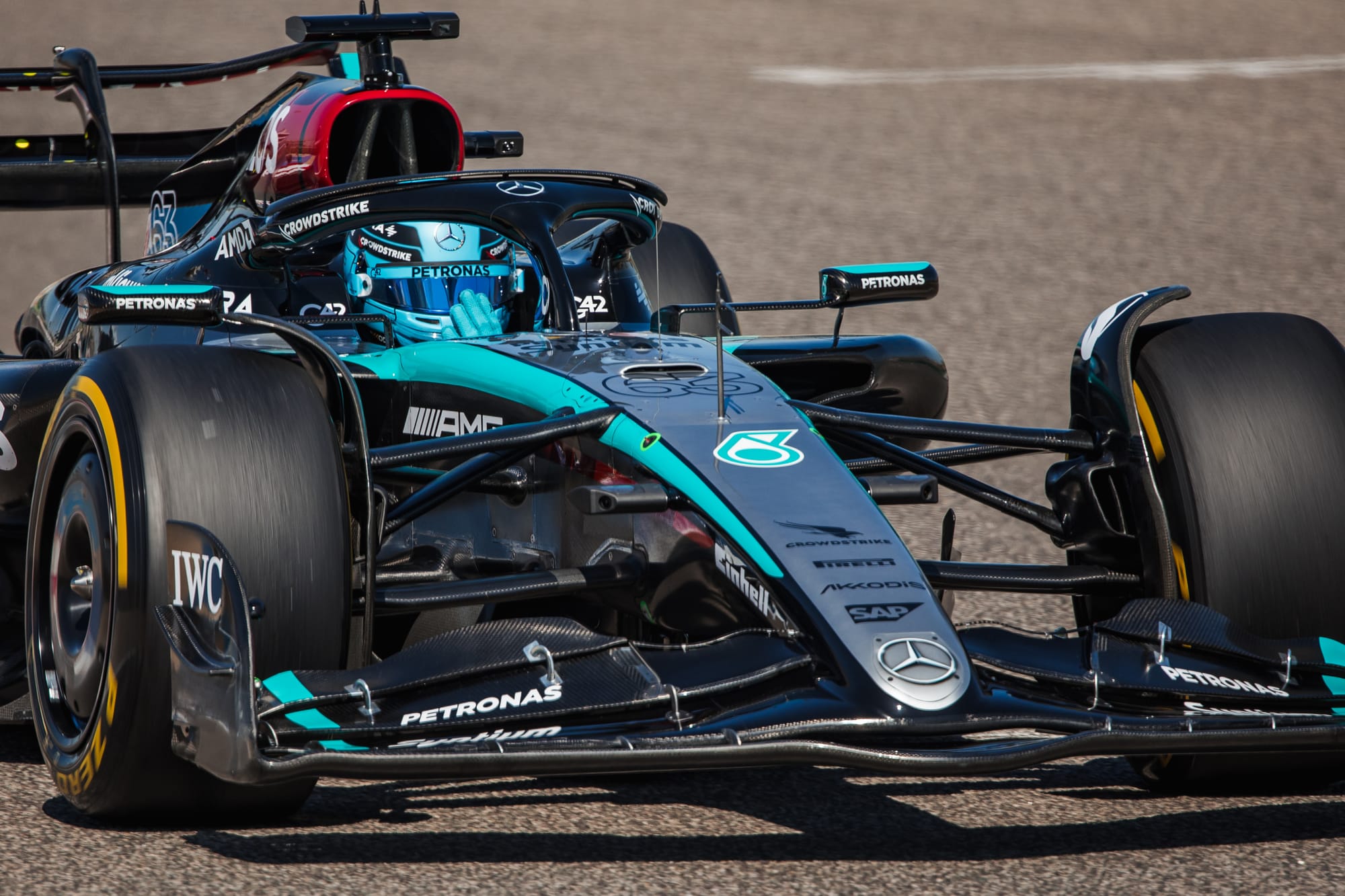
"What's been put on a car is always following an exchange with the FIA, all through the process," Wolff explained.
"It's not such a thing where you have a clever idea and then you bolt it on to test and you think, 'That could be or couldn't be challenged'.
"That's a long process of dialogue that happens over the winter. I feel we're in an OK place."
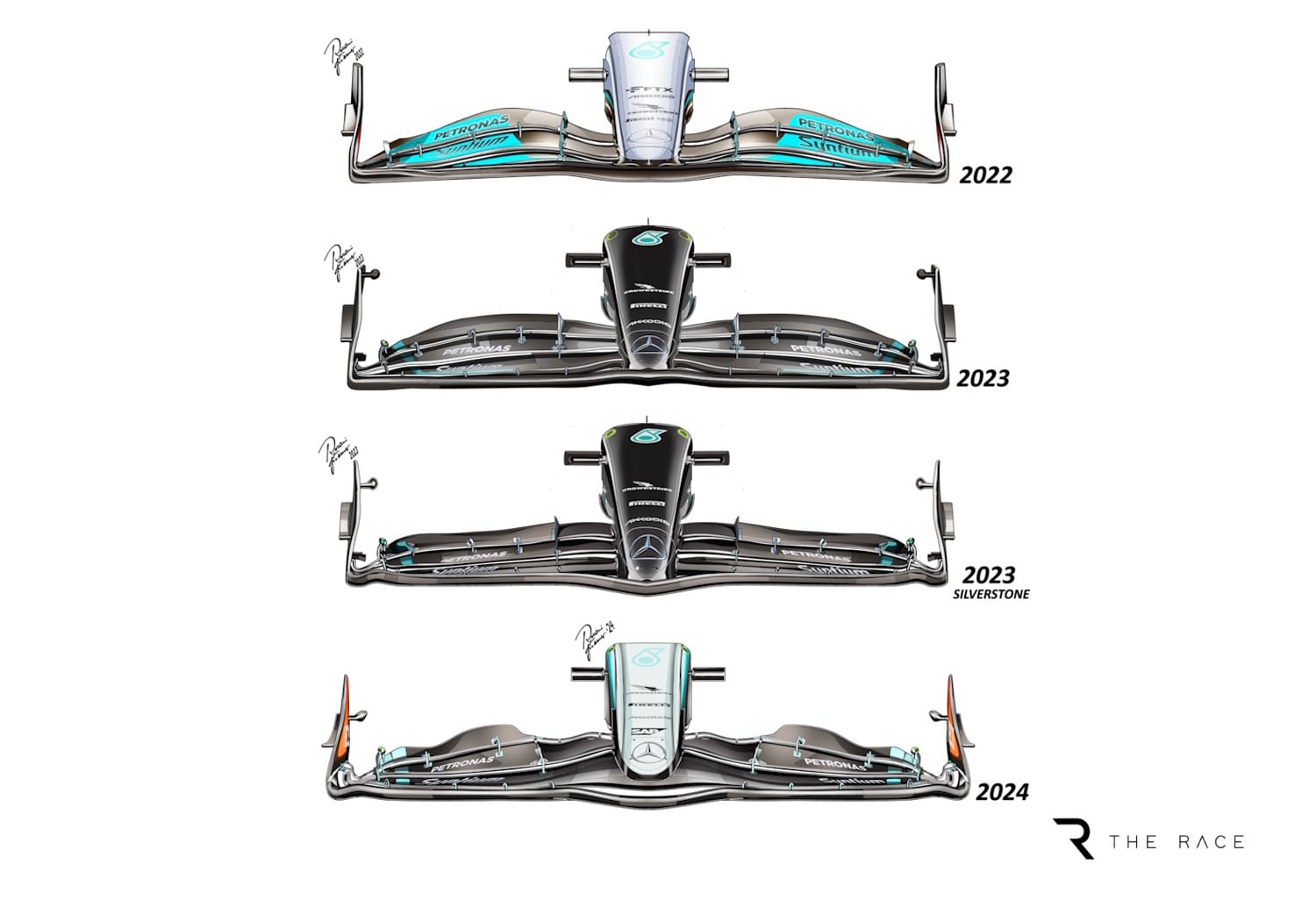
Wolff is right to say that no innovation is simply bolted onto the car without some dialogue with the FIA's technical team, particularly in the case of innovations that run closely to the edges of the rules.
That alone isn't evidence that it is legal or immune to the FIA wanting to close that loophole, however, considering a multitude of elements have been deemed illegal or the avenues to them closed off, even after running on F1 cars throughout testing and race weekends.
But for now, there's been zero public indication from the FIA that Mercedes' front wing may come under scrutiny or that particular loophole will be closed.
However F1 chief technical officer Pat Symonds - previously technical lead at Renault and Williams - called the front wing "a very interesting interpretation" and suggested the loophole could be closed off.
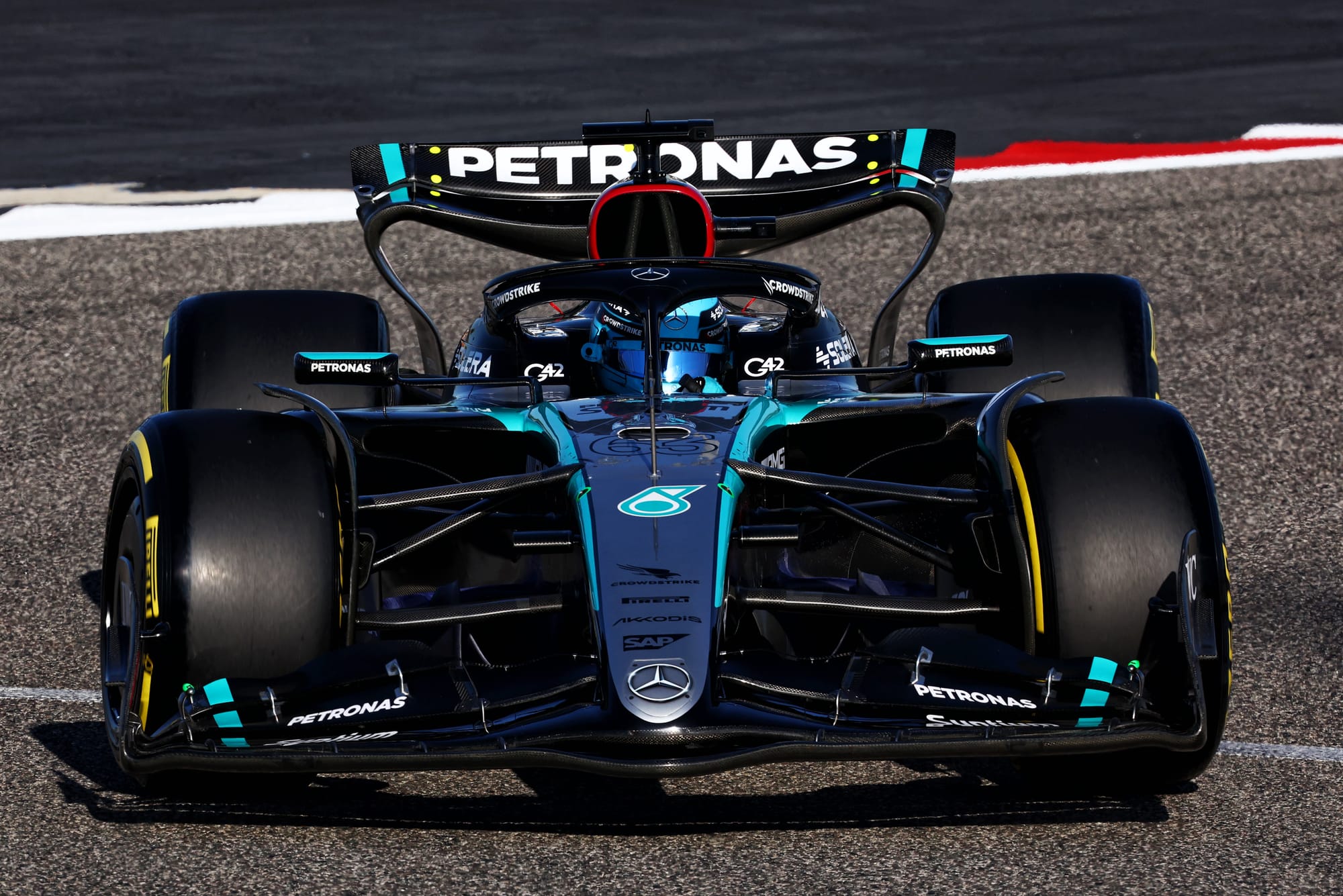
"Article 3 [of the regulations] dictates how the aerodynamic shapes are produced and it's very clear in the opening statements, the rules aim to ensure we get this close following [between cars]," Symonds said.
"So really when you start to get things that are perhaps producing some outwash - and what we're seeing here is really trying to reinstate quite a strong vortex to push that very turbulent air that's coming from the front wheel, to try and push it aside. - one question is 'is that really within the spirit of the rules?'
"It's within the regulations, the letter of the law, no doubt about it. But is that the sort of thing we want?
"I don't know, that's perhaps a bit more debatable. I think we need to know really how strong is the effect.
"The FIA now have a very good aerodynamic group. The group that used to work for me are capable of looking at this and saying 'yeah, actually there's nothing wrong with that' or 'this is starting a trend we don't really want to see'. We'll see."
W15 has moved to right platform, not copied Red Bull
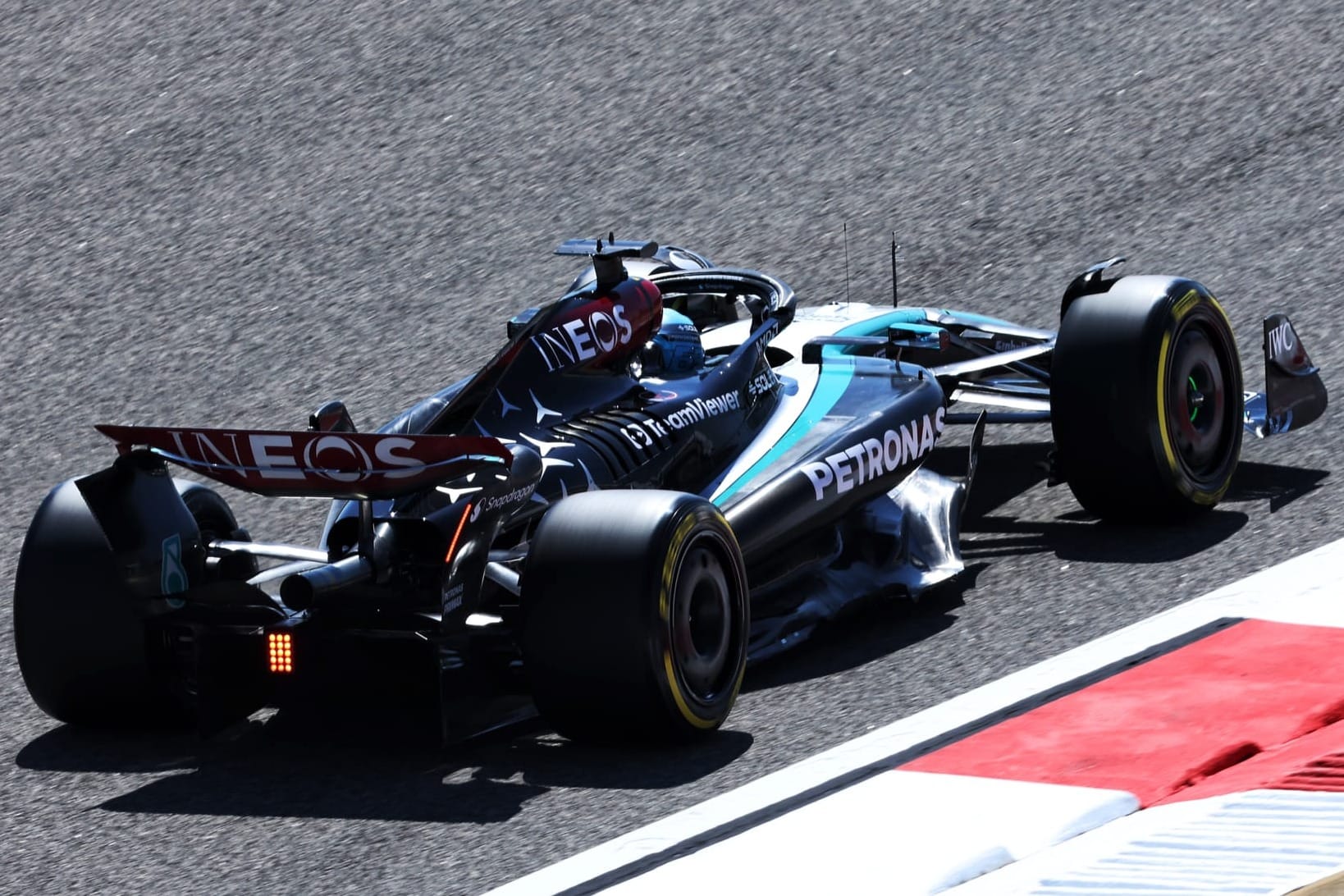
Mercedes' 2024 car marks a clear shift away from the concept that caused the team so much grief during the first two years of this rules cycle, as it's moved to something closer to Red Bull's all-conquering RB19.
But considering Red Bull's just made major innovations with its RB20, should Mercedes be concerned Red Bull's just pivoted away from the concept Mercedes has switched to?
"The truth is you don't know; every team follows their own development direction and is trying to generate laptime in the virtual world, in simulators and in the windtunnel," Wolff replied .
"And they're going to put that on the car no matter what other teams do.
"We have gone back from our zero-pod concept and some of the features because we felt it didn't help the car's performance, and that's why we've gone to something that at first sight looks more conventional from the bodywork but we believe is a better platform."


